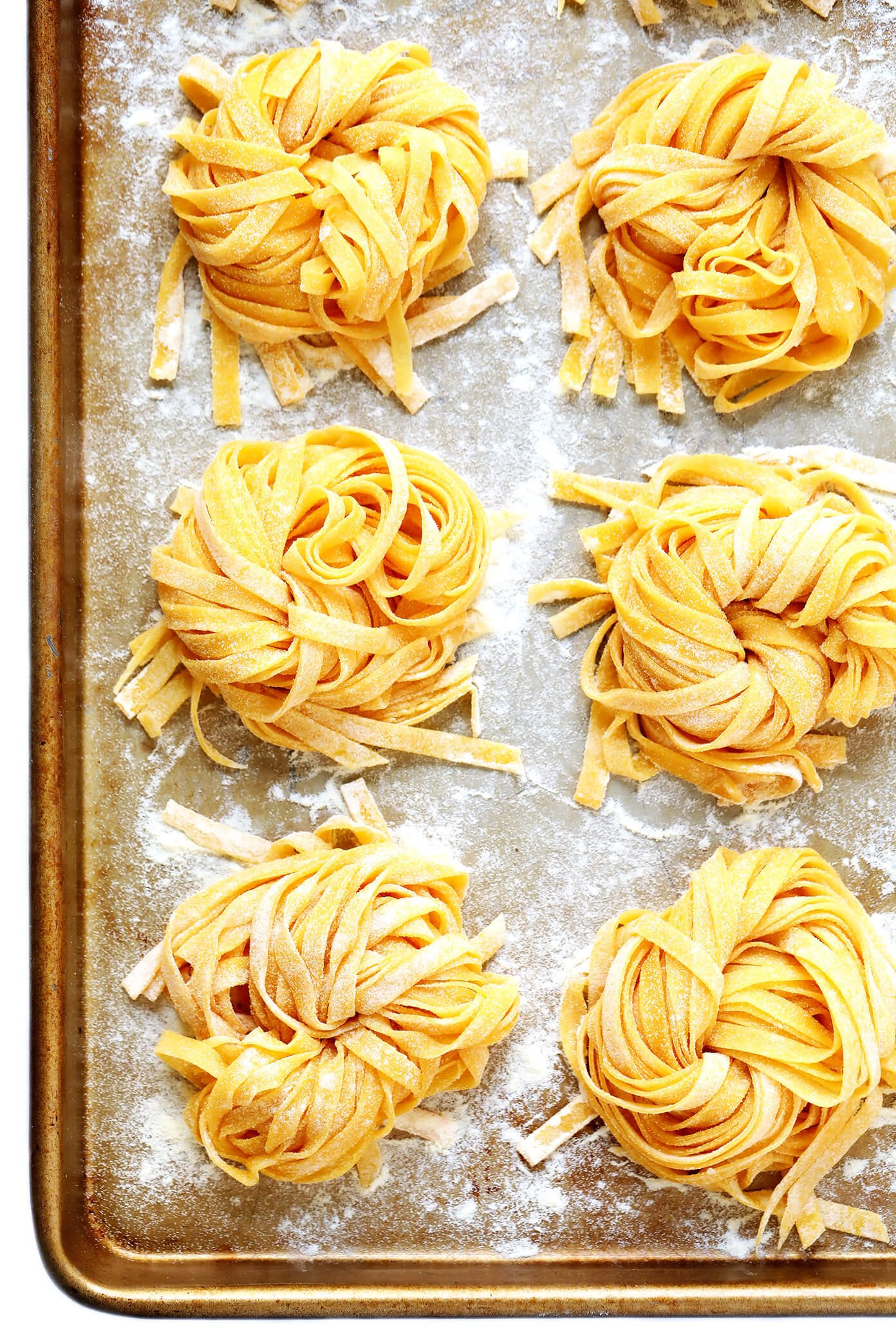
How to make homemade ravioli:
I’m no expert, but since this was my first time and this butternut squash ravioli turned out perfectly, I feel qualified enough to tell you based on my experience.
- In my opinion, there are three necessary pieces of equipment: a stand mixer with a dough hook, a pasta roller, and a ravioli maker. These are amazon links to the exact products I use. Now, you certainly don’t need all of this equipment and people have been making pasta by hand for centuries, but if you have them, making pasta is a breeze.
- Like I said above, I prefer an even mix of semolina flour to all-purpose flour. It gives the pasta great texture and chew, plus it’s insanely easy to work with. The addition of olive oil to the dough can be tasted in the final pasta – YUM! You must kneed your pasta dough for a solid ten minutes. If you want to do this by hand, more power to you, but pasta dough is not a soft dough like bread dough, so you’re in for a workout. I highly recommend using your Kitchenaid mixer. You have to be sure to cover the dough and allow it to rest. This process allows the gluten to do whatever gluten does to make pasta wonderful.
- To roll out the sheets of pasta dough to make your homemade ravioli, you can roll it on the counter by hand, but I highly recommend using a pasta roller. I’ve used the KitchenAid pasta attachments before, and while they certainly are easy to use (much like the spiralizer attachment that I highly recommend), there is something so satisfying about rolling pasta dough in a made in Italy pasta roller. Just be sure you use enough flour to avoid any sticking in your pasta machine.
- To roll your pasta sheets, start with the thickest setting, and roll it through. Fold that strip of dough into thirds and then send it back through after rotating 90 degrees. This is how you get nice straight edges. Continue to tighten the thickness settings with each roll. I believe I took it to level 5 thickness. Make sure your pasta sheets are wide enough to fully cover the ravioli mold.
- Cover the ravioli mold with the pasta dough, create a well for the filling, and add about a heaping teaspoon of roasted garlic butternut squash filling to each well. Before covering with the second sheet of dough, you can wet your finger and drag it across the dough in order to get the two sheets to really stick and seal together.
- Gently roll the dough together to cut the pieces. Be sure to have floured all of your dough generously so that it releases easily from the mold. Then, all you have to do is turn it over, give it a tap, and they all fall out. Easy!
- You can freeze your homemade ravioli at this point or toss it in salted boiling water for just a few minutes until they float.
No comments:
Post a Comment